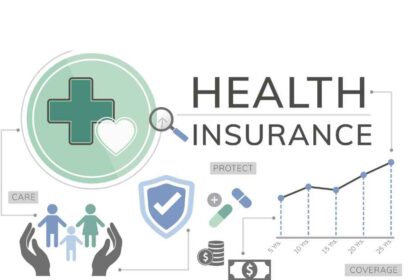Picture this: it’s 6 a.m., and your first shift is suiting up for another busy day. Machines hum to life, conveyor belts start rolling, and the familiar scent of processing hits the air. But there’s an unease—not because the job’s tough (you’ve nailed that part), but because food safety, that non-negotiable constant, can unravel fast if one detail slips through.
That’s exactly where ISO 22000 steps in. Not as a buzzword. Not as another layer of bureaucracy. But as the backbone of keeping what you produce safe, consistent, and compliant—without losing your mind over paperwork or audits.
Let’s get into it.
What Exactly Is ISO 22000? (And Why Should You Care?)
So, ISO 22000. It sounds technical—and sure, it is. But at its heart, it’s a globally recognized food safety management standard. Think of it like a blueprint for building a safe food production system—designed to catch problems before they reach shelves, fridges, or dinner tables.
Now, if you’re thinking, “We already have HACCP,” that’s fair. But here’s the thing: ISO 22000 includes HACCP—and then builds on it. It combines the hazard control approach with management system principles, giving you a full 360-degree view of food safety risks, communication, and accountability.
Basically, HACCP walks. ISO 22000 runs.
The Real-World Problems ISO 22000 Solves
You might have top-tier machinery, spotless facilities, and a killer production schedule. But without a standardized safety management system, even minor oversights—say, a mislabeled allergen—can trigger recalls, lawsuits, and customer distrust.
ISO 22000 helps you:
- Spot risks early through proactive hazard analysis
- Clarify roles so no one’s guessing who handles what
- Standardize communication between departments (finally!)
- Prove your credibility to buyers, regulators, and consumers
- Integrate smoothly with other ISO systems (like ISO 9001 or ISO 14001)
That last one? Super useful if you’re juggling multiple standards.
From Field to Fork: How ISO 22000 Works Across the Supply Chain
You know how complex the food chain is. From raw ingredients to cold storage to final packaging, there are a hundred moving parts. ISO 22000’s beauty is that it doesn’t just look at your part—it encourages coordination up and down the line.
Everyone—suppliers, processors, shippers, retailers—can be part of the same system. That means fewer misunderstandings and better traceability when something goes wrong (because, let’s be real, it occasionally will).
Here’s how it breaks down:
- Interactive Communication – Everyone in the chain knows who to talk to and when.
- System Management – Processes get documented, reviewed, and improved on the fly.
- PRPs (Prerequisite Programs) – These are your hygiene and maintenance basics.
- HACCP Principles – Critical control points? Check. Risk assessments? Covered.
- Continuous Improvement – No resting on laurels; ISO 22000 demands updates.
“Okay, But We’re Already Careful.” Why You Still Need ISO 22000
Honestly? That mindset is what causes trouble.
Plenty of food processors run tight ships—but without documented, auditable systems, it’s all reputation with no receipts. ISO 22000 proves your due diligence. It backs up your instincts with hard data and clear procedures.
It also gives your team a consistent way to respond when things go sideways—whether it’s an equipment failure, a contaminated shipment, or a customer complaint.
What Certification Actually Looks Like (No, It’s Not a Nightmare)
Let’s squash this myth: getting ISO 22000 certified doesn’t mean endless meetings, surprise audits, and headaches. Done right, it’s a structured, manageable process.
Here’s the basic roadmap:
- Gap Analysis – See where you are versus where you need to be.
- System Design – Map out your processes. You’re probably doing most of this already.
- Training – Bring the team onboard without drowning them in jargon.
- Internal Audit – Catch issues before your external auditor does.
- Certification Audit – Two stages. First for paperwork, then for performance.
After that? You’re certified. It’s valid for three years, with yearly surveillance audits to keep you sharp.
The Sneaky ROI: ISO 22000 Saves More Than It Costs
Let’s get something straight—implementing ISO 22000 isn’t free. You’ll spend money on consultants, audits, maybe some software. But the long-term payoffs? Massive.
Here’s what you really gain:
- Fewer Recalls – Prevention is cheaper than damage control.
- Stronger Market Access – Especially for exports, retailers love a certified supplier.
- Insurance Leverage – Some providers lower premiums for ISO-certified firms.
- Less Downtime – Fewer surprises, smoother production.
Plus, morale improves. Weird, right? But staff love clarity. When everyone knows what’s expected, mistakes drop and confidence rises.
ISO 22000 vs. FSSC 22000 vs. BRCGS – What’s the Difference?
This one comes up a lot, so let’s break it down.
- ISO 22000 – Global food safety standard, adaptable, widely accepted.
- FSSC 22000 – Builds on ISO 22000 but adds industry-specific requirements.
- BRCGS – British-based, more rigid, but recognized by major retailers.
Think of ISO 22000 as your universal translator. It gets you fluent across markets. If your buyers demand FSSC or BRCGS later, ISO 22000 gives you a strong foundation.
A Few Common Pitfalls—and How to Dodge Them
No guide is complete without a few cautionary tales. Here’s where companies trip up:
- Skipping the Culture Part – If your team sees this as a management-only issue, good luck. Everyone has to buy in.
- Copy-Pasting Documents – Templates are helpful, but they need tailoring.
- Underestimating Internal Audits – These should be real drills, not box-checking.
- Overcomplicating Things – Simple, clear processes beat fancy systems every time.
The fix? Keep things human. Train in plain language. Celebrate small wins. Keep it real.
The Little Things That Make a Big Difference
You know what surprises many folks after implementing ISO 22000? The little ripple effects.
Lunchrooms get cleaner. Labels improve. Teams talk more. Supply chain gaps get spotted and plugged. It’s like turning on a light in a room you didn’t realize was dim.
And the beauty is—it’s not a one-time event. ISO 22000 is built for updates. As your facility evolves, so does the system.
Wrapping It All Up: Food Safety Is a Living System
Here’s the thing: food safety isn’t static. Neither is risk. Ingredients change, suppliers rotate, machines wear out, people make mistakes.
ISO 22000 accepts all that—and builds resilience into your daily routine.
So if you’ve been sitting on the fence, wondering whether now’s the time to go for it… take the step. Start the process. Talk to your team. Bring in an expert if you need to.
It’s not about passing audits or hanging a certificate on the wall. It’s about knowing—really knowing—that what you send out the door is safe, reliable, and worthy of trust.
And in food manufacturing, that trust? It’s everything.
Need Help Getting ISO 22000 Certified?
Plenty of experts and consultants specialize in helping food manufacturers like you implement ISO 22000 without drowning in red tape. Look for local advisors or software tools that simplify document control and traceability.





